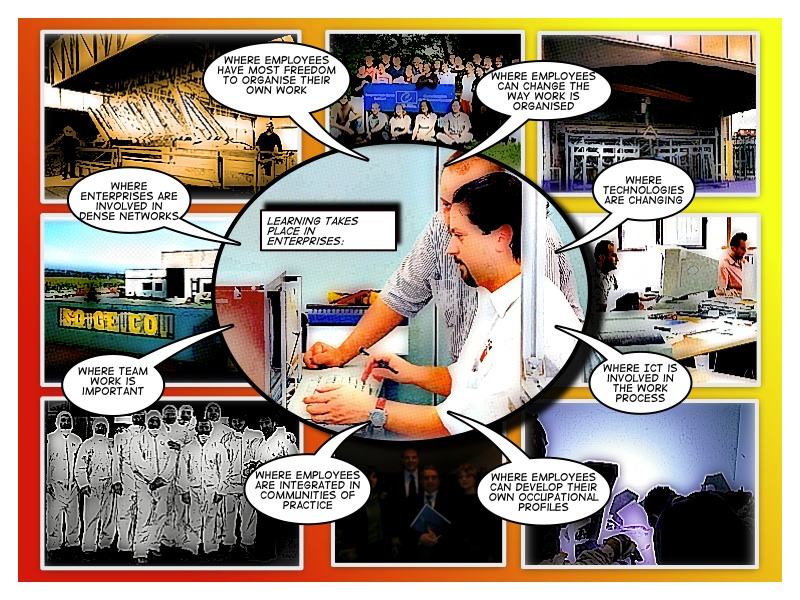Comics and Projects

Projects are central to the development of new ideas and applications for learning and technology. Projects allow us the space to try out new ideas and the time and opportunity to explore and share those ideas. At least in theory. In truth we spend too much time chasing money, in matching our ideas to what policy makers and funders want and in filling in endless report forms. But, it goes with the territory.One thing I think we are woefully weak at it making the results of our projects available. Yes, we have our conference papers. and we have the project web sites, complete with partner logos and PDF downloads of reports. But far too seldom is the work presented in a way that the ideas are accessible or is there an engaging narrative of what we did and what we found out and how it might be used by others.Pontydysgu are not brilliant at this. But we have been thinking about the issue. One thing we decided to do was to present a brief overview of all the different projects we are engaged in, together with links to project web sites and resources.
That section is now live on our web site, althoigh there is still some data to add. And at some time, I will try to turn some of the less transparent project descriptions, lifted from project applications and web sites, into some more convincing texts.We have also been looking at how to use multimedia to present our ideas – through podcasts and videos and slideshows. More recently we have been developing comics. Adrian Puscuta, our intern student form Bucharest has shown a real aptitude for this work. The first two of his Comic Books – ‘Searching, Lurking and the Zone of Proximal Development’ and ‘Personal Learning Environments – What they are and what they might be useful for’ are now on line in the Multimedia/Comics section of the site.I’d be interested in what you think. I like Comic books because of the power of the pictures and text together to construct a narrative. When I make a presentation I try to tell a story – the Comic Books are the nearest way I have found of telling those stories in an asynchronous media.

This is briljant! But is this not very complex to produce? And I hope Pontydysgu when Adrian has left the building.
It is not as hard as it looks Wilfred. We use ComicLife. Perhaps the most difficult thing is producing the story boards, the narrative which holds it all together. The next thing is a good store of photos. Most of ours are Creative Commons licensed from Flickr. This takes a lot of time searching but obviously gets easier after you build up a stock. ComicLife is great because it comes with presets of filters. Obviously you could do it yourself in Photoshop but it would take for ever. and it comes with a great range of templates – although we have developed quite a lot of these ourselves.
And then it is not so much complex but time consuming – but a lot of fun. I produced a project evaluation report as a cartoon book – it is the first such report I did which I think everyone read!
NB. Although ComicLife used to be Mac only there is now a public beta of a PC version available.